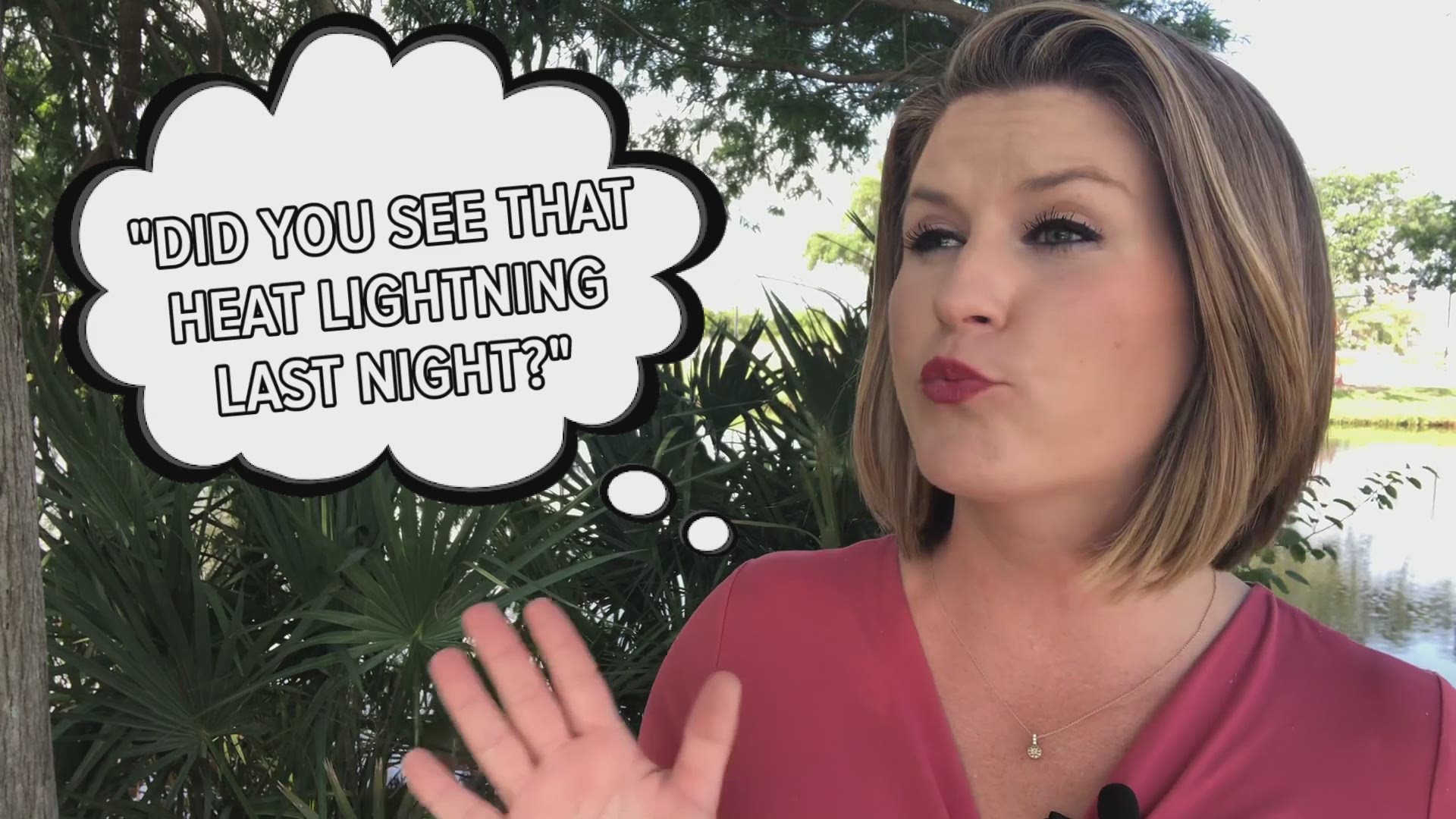JACKSONVILLE, Fla. — Heat lightning.
It's quite possibly the most misused weather term out there. Heat lightning implies the heat is what's causing the lightning when, in fact, it's most definitely not.
What you're actually seeing is lightning from a distant thunderstorm, whether that's cloud-to-cloud lightning or cloud-to-ground lightning. The thunderstorm is just too far away to see the actual bolt or hear the accompanying rumble.
While many people incorrectly think that heat lightning is a specific type of lightning, it is simply the light produced by a thunderstorm far, far away.
Light travels faster than sound. Therefore, lightning can be seen typically about 100 miles (or more!) away. Thunder can only be heard about 10 miles away.
The curvature of our Earth helps us to see these summertime storms, especially at night, a lot farther as well. Also, in the warmest months across Florida our cumulonimbus clouds can tower anywhere from 30- to even 60-thousand feet up into the atmosphere. As a gauge, most commercial planes fly around 30-thousand feet.
So, call it what you want! But the next time you hear someone use the term 'heat lightning' ask them what they mean by it. A better way to put it might be 'silent' or 'summer lightning!'
If you see any nighttime flashes in the months to come, and are ever curious to see just how far away those thunderstorms are, you can track the lightning on the First Coast News app.
And remember: When thunder roars, head indoors! That means the thunderstorm is too close and you are close enough to get struck by lightning.

